Groups joined
Discussions started
Discussion Comments
Resources added
Stephanie O'Donnell added a new Event - "Catch up with The Variety Hour: March 2023" to Acoustics
Stephanie O'Donnell added a new External Link - "Synergistic use of UAV surveys, satellite tracking data, and mark-recapture to estimate abundance of elusive species" to Drones
Stephanie O'Donnell added a new Article - "Data Visualization Fundamentals and Best Practices Course" to Data management and processing tools
Stephanie O'Donnell added a new Article - "Python for Geographers (video)" to Geospatial
Stephanie O'Donnell added a new Event - "ARSET - Fundamentals of Machine Learning for Earth Science " to AI for Conservation
Stephanie O'Donnell added a new Event - "Using eDNA to survey Country: Traditional Owner Training & Certification Program (Part 3 of 3)" to eDNA & Genomics
Stephanie O'Donnell added a new Event - "How to interpret results and get the most out of eDNA data (Part 2 of 3)" to eDNA & Genomics
Stephanie O'Donnell added a new Event - "Importance of eDNA survey design (Part 1 of 3)" to eDNA & Genomics
Stephanie O'Donnell added a new Discussion - "Tools & Experiences with Sea Turtle Monitoring" to Marine Conservation
Stephanie O'Donnell added a new Event - "GIS for a Sustainable World" to Geospatial
Stephanie O'Donnell added a new Career Opportunity - "WILDLABS Conservation Technology Intern, Kenya" to East Africa Community
Stephanie O'Donnell added a new Discussion - "Google Earth Engine vs Microsoft's Planetary Computer: Which do I use? " to Geospatial
Stephanie O'Donnell added a new External Link - "The WILDLABS Variety Hour: February 2023 - YouTube" to Animal Movement
Groups
Group
- Latest Discussion
- AgTech: Breaking out of silos
- Latest Resource
- /
- Brokering finance deals to fund nature restoration with Rob Gardner
This is the title of an episode of Ben Goldsmith's 'Rewilding the World' podcast series. I have been wondering for a while, how is it done? Here is a crystal clear outline.
Group
- Latest Discussion
- Automated Image analysis
This project aimed to reduce human-carnivore conflict by building a resilient boma for a vulnerable family in Hunyari village. It served as a model for other families, promoting stronger livestock protection. The initiative included community engagement on predator deterrence and sustainable building practices. The success of the pilot is inspiring others to adopt similar solutions.
Group
- Latest Discussion
- Can RGB drone data & Machine Learning be of value in Conservation?
- Latest Resource
- /
- Nature Tech for Biodiversity Sector Map launched!
Conservation International is proud to announce the launch of the Nature Tech for Biodiversity Sector Map, developed in partnership with the Nature Tech Collective!
Group
- Latest Discussion
- eDNA sampling kits
- Latest Resource
- /
- Nature Tech for Biodiversity Sector Map launched!
Conservation International is proud to announce the launch of the Nature Tech for Biodiversity Sector Map, developed in partnership with the Nature Tech Collective!
Group
- Latest Resource
- /
- Behind the Buzz Season 1: From Data to Decisions
Come along to the first season of Behind the Buzz, where we’ll bring in experts to break down the basics of global conservation policy frameworks through the lens of animal movement and explore how our community can better translate movement data to decision-making.
Group
- Latest Discussion
- Ground Truth: How Are You Verifying What Maps Show?
- Latest Resource
- /
- What Are Innovative Technologies, and Why Should Conservationists Care?
Conservationists use tools like drones, satellites, and camera traps to monitor ecosystems and scale their impact. But new challenges like transparency, funding gaps, and engagement remain. Web 3.0 technologies offer solutions, but adoption can be complex. Understanding their benefits and barriers is key.
Group
- Latest Discussion
- Drone & ai use for uncovering illegal logging camps
- Latest Resource
- /
- INSTANT DETECT 2.0 - ALPHA TESTING
The worst thing a new conservation technology can do is become another maintenance burden on already stretched field teams. This meant Instant Detect 2.0 had to work perfectly from day 1. In this update, Sam Seccombe describes the extensive Alpha testing conducted at Whipsnade Zoo to validate the performance and find the limits of ZSL's Instant Detect 2.0 system.
Group
- Latest Discussion
- Beyond the Tech Hype / Más Allá del Hype Tecnológico
- Latest Resource
- /
- New WILDLABS Funding & Finance group
WildLabs will soon launch a 'Funding and Finance' group. What would be your wish list for such a group? Would you be interested in co-managing or otherwise helping out?
Group
- Latest Discussion
- Can RGB drone data & Machine Learning be of value in Conservation?
- Latest Resource
- /
- Can/Should UAVs Be The Answer To Urbanisation & Wildlife Conflicts
Over the years, a large number of developments have gone up in the area that I live in and the municipality is not doing what they should when it comes to upholding the laws that have been put in place to protect the wildlife in this protected paradise. Is anyone else around the world facing this in their communities? Can/should drones and open source software be the answer to better monitoring of construction companies that are in breach of wildlife regulations? I would like to get others thoughts on this subject as it can be complicated. GeoWing Academy has been using drones and opensource software to monitor some of the changes and damages to the environment to illustrate the issues to the local municipality and government. There is a PDF version of the article attached should the images in the article not be visible
Group
- Latest Discussion
- Documentary on Conservation
- Latest Resource
- /
- Nature Tech for Biodiversity Sector Map launched!
Conservation International is proud to announce the launch of the Nature Tech for Biodiversity Sector Map, developed in partnership with the Nature Tech Collective!
Group
- Latest Discussion
- Advice needed for accessible acoustic monitoring
- Latest Resource
- /
- HawkEars: a high-performance bird sound classifier for Canada
HawkEars is a deep learning model designed specifically to recognize the calls of 328 Canadian bird species and 13 amphibians.
Group
- Latest Discussion
- Dual-/Multi-Use Technology Strategies
- Latest Resource
- /
- Nature Tech for Biodiversity Sector Map launched!
Conservation International is proud to announce the launch of the Nature Tech for Biodiversity Sector Map, developed in partnership with the Nature Tech Collective!
Group
- Latest Discussion
- GPS collars for domestic dogs
- Latest Resource
- /
- Effectiveness of canine-assisted surveillance and human searches for early detection of invasive spotted lanternfly
A published research study
Group
- Latest Discussion
- Overview of Image Analysis and Visualization from Camera traps
- Latest Resource
- /
- Nature Tech for Biodiversity Sector Map launched!
Conservation International is proud to announce the launch of the Nature Tech for Biodiversity Sector Map, developed in partnership with the Nature Tech Collective!
Group
- Latest Discussion
- Overview of Image Analysis and Visualization from Camera traps
- Latest Resource
- /
- Nature Tech for Biodiversity Sector Map launched!
Conservation International is proud to announce the launch of the Nature Tech for Biodiversity Sector Map, developed in partnership with the Nature Tech Collective!
Group
- Latest Discussion
- Planet Imagery is no longer available on GFW
Group
- Latest Discussion
- AI accelerator for nonprofits working in the Climate area
- Latest Resource
- /
- Case Study: Drone-based radio-tracking of Eastern Bandicoots
Wildlife Drones was deployed by Zoos Victoria in a trial project tracking captive-bred Eastern Barred Bandicoots that were tagged and released into the wild
Group
- Latest Discussion
- Overview of Image Analysis and Visualization from Camera traps
- Latest Resource
- /
- Nature Tech for Biodiversity Sector Map launched!
Conservation International is proud to announce the launch of the Nature Tech for Biodiversity Sector Map, developed in partnership with the Nature Tech Collective!
Group
- Latest Discussion
- Advice for Junior Web Developer
- Latest Resource
- /
- Advancing Hierarchical Classification of Ocean Life
Join the FathomNet Kaggle Competition to show us how you would develop a model that can accurately classify varying taxonomic ranks!
Group
- Latest Resource
- /
- New WILDLABS Funding & Finance group
WildLabs will soon launch a 'Funding and Finance' group. What would be your wish list for such a group? Would you be interested in co-managing or otherwise helping out?
Group
- Latest Discussion
- DIY: Pressure Chamber
- Latest Resource
- /
- Can CBIs promote coexistence? A Case Study from Northern Tanzania
Can conservation-based incentives promote the willingness of local communities to coexist with wildlife? A case of Burunge Wildlife Management Area, Northern Tanzania
Group
- Latest Discussion
- PhD Advice
Group
- Latest Discussion
- Overview of Image Analysis and Visualization from Camera traps
- Latest Resource
- /
- HawkEars: a high-performance bird sound classifier for Canada
HawkEars is a deep learning model designed specifically to recognize the calls of 328 Canadian bird species and 13 amphibians.
Group
- Latest Discussion
- From Field to Funder: How to communicate impact?
- Latest Resource
- /
- Application of computer vision for off-highway vehicle route detection: A case study in Mojave desert tortoise habitat
Driving off-highway vehicles (OHVs), which contributes to habitat degradation and fragmentation, is a common recreational activity in the United States and other parts of the world, particularly in desert environments with fragile ecosystems. Although habitat degradation and mortality from the expansion of OHV networks are thought to have major impacts on desert species, comprehensive maps of OHV route networks and their changes are poorly understood. To better understand how OHV route networks have evolved in the Mojave Desert ecoregion, we developed a computer vision approach to estimate OHV route location and density across the range of the Mojave desert tortoise (Gopherus agassizii). We defined OHV routes as non-paved, linear features, including designated routes and washes in the presence of non-paved routes. Using contemporary (n = 1499) and historical (n = 1148) aerial images, we trained and validated three convolutional neural network (CNN) models. We cross-examined each model on sets of independently curated data and selected the highest performing model to generate predictions across the tortoise's range. When evaluated against a ‘hybrid’ test set (n = 1807 images), the final hybrid model achieved an accuracy of 77%. We then applied our model to remotely sensed imagery from across the tortoise's range and generated spatial layers of OHV route density for the 1970s, 1980s, 2010s, and 2020s. We examined OHV route density within tortoise conservation areas (TCA) and recovery units (RU) within the range of the species. Results showed an increase in the OHV route density in both TCAs (8.45%) and RUs (7.85%) from 1980 to 2020. Ordinal logistic regression indicated a strong correlation (OR = 1.01, P < 0.001) between model outputs and ground-truthed OHV maps from the study region. Our computer vision approach and mapped results can inform conservation strategies and management aimed at mitigating the adverse impacts of OHV activity on sensitive ecosystems.
Group
- Latest Discussion
- Is a physical meet possible this 2025?
- Latest Resource
- /
- MyProgress: Advancing GIS and R programming skills.
A fascinating journey of unleashing my potentials in spatial analysis using ArcGIS Pro and R programming.
Group
- Latest Discussion
- Field-Ready Bioacoustics System in Field Testing
- Latest Resource
- /
- Nature Tech for Biodiversity Sector Map launched!
Conservation International is proud to announce the launch of the Nature Tech for Biodiversity Sector Map, developed in partnership with the Nature Tech Collective!
Group
- Latest Discussion
- Documentary on Conservation
- Latest Resource
- /
- HawkEars: a high-performance bird sound classifier for Canada
HawkEars is a deep learning model designed specifically to recognize the calls of 328 Canadian bird species and 13 amphibians.
Group
- Latest Discussion
- Autonomizing Small Mammal Traps
- Latest Resource
- /
- Judging Panel Award Winners: 2024 #Tech4Wildlife Photo Challenge
Join us in celebrating this year’s Judging Panele Award winners!
Group
- Latest Discussion
- Feedback on PCB for Mothbox
Applications are open until April 15th
Group
- Latest Discussion
- A call for support
- Latest Resource
- /
- MyProgress: Advancing GIS and R programming skills.
A fascinating journey of unleashing my potentials in spatial analysis using ArcGIS Pro and R programming.
Group
- Latest Discussion
- From Field to Funder: How to communicate impact?
- Latest Resource
- /
- Brokering finance deals to fund nature restoration with Rob Gardner
This is the title of an episode of Ben Goldsmith's 'Rewilding the World' podcast series. I have been wondering for a while, how is it done? Here is a crystal clear outline.
Group
- Latest Discussion
- Project Update — Nestling Growth App
We are thrilled to start a brand new group, the Latin America Community, and introduce the new Group Leaders for the 2024-2025 term: Vanesa Reyes and Juan Sebastián Ulloa Chacón. // Estamos muy contentos de iniciar un nuevo grupo, la Comunidad Latinoamericana, y presentar a los nuevos Líderes de Grupo para el período 2024-2025: Vanesa Reyes y Juan Sebastián Ulloa Chacón. // Estamos muito felizes em iniciar um novo grupo, a Comunidade Latino-Americana, e apresentar os novos Líderes de Grupo para o período 2024-2025: Vanesa Reyes e Juan Sebastián Ulloa Chacón.
Bookmarks
Keep track of the resources that matter to you! Collections let you save, organise, and share content from all over the WILDLABS community. Create your first collection by clicking on the bookmark icon wherever you see it.
My Courses
These are your in-progress and completed courses. Explore more courses through our catalogue.
To find courses you have created, see your "My Draft Content" or "My Content" tabs.
Camera Trapping for Conservation
Introduction to Conservation Technology
Environmental DNA for Terrestrial Vertebrate Conservation
Settings
Stephanie O'Donnell's Content
Hi everyone, ICCB came up again in the Variety Hour aftershow chat yesterday, and I've also been getting lots of messages/questions about what our plans are for ICCB. So,...
30 March 2023
Careers
We are looking for a dedicated and knowledgeable Climate Change Manager to support the delivery of Arm’s carbon reduction commitments, including reporting and compliance. The ideal candidate will love details and...
27 March 2023
Link
Four key recommendations for how data science and AI can be better harnessed to tackle climate change: 1. Apply cutting-edge data science and AI to environmental decision-making. 2. Foster a community of AI...
27 March 2023
In this radio episode, we speak to Alex Rogers, Professor of Computer Science at the University of Oxford. We discuss how Alex's research team developed the acoustic recording device AudioMoth, how low-cost technologies...
24 March 2023
We used a combination of high-resolution satellite tracking (Fastloc-GPS), uncrewed aerial vehicle (UAV) surveys, and capture-mark-recapture approaches to assess the abundance of immature hawksbill (Eretmochelys...
21 March 2023
When do you use a bar chart over a line chart? What are area charts good for? What's wrong with pie charts? Learn about how these different types of data visualization work, and how they're used, in Observable's first...
21 March 2023
Article
This technical workshop was recorded at the Esri Developer Summit 2021. Presenters use packages to make GIS workflows reproducible through code, work with spatial data and make relevant maps using open source packages...
21 March 2023
Hi wildlabbers, Mtalii Ochieng gave us an awesome walkthrough all the tools and tech his team at Bahari hai is using in their work to monitor and protect sea turtles. The...
17 March 2023
It was an utter delight to have Dr. Gilberto Câmara along to our Variety Hour show last week, he was an incredibly engaging and knowledgeable presenter and ended up staying back...
3 March 2023
Last week's Variety Hour is now up on youtube. It was a great session - we covered Moveapps, an awesome community project building marine biologgers, chatgpt and google earth engine vs microsoft's planetary computer....
3 March 2023
The guide considers four different types of samples (water, sediments, invertebrate collections and diatoms), and two primary analysis types (single species detection via methods such as qPCR and assessment of...
23 February 2023
Discussion
Hi everyone, Two best practice guides have been added to the library this week, and i'm hearing some whispers of some others in development. I'm collating them into this...
23 February 2023

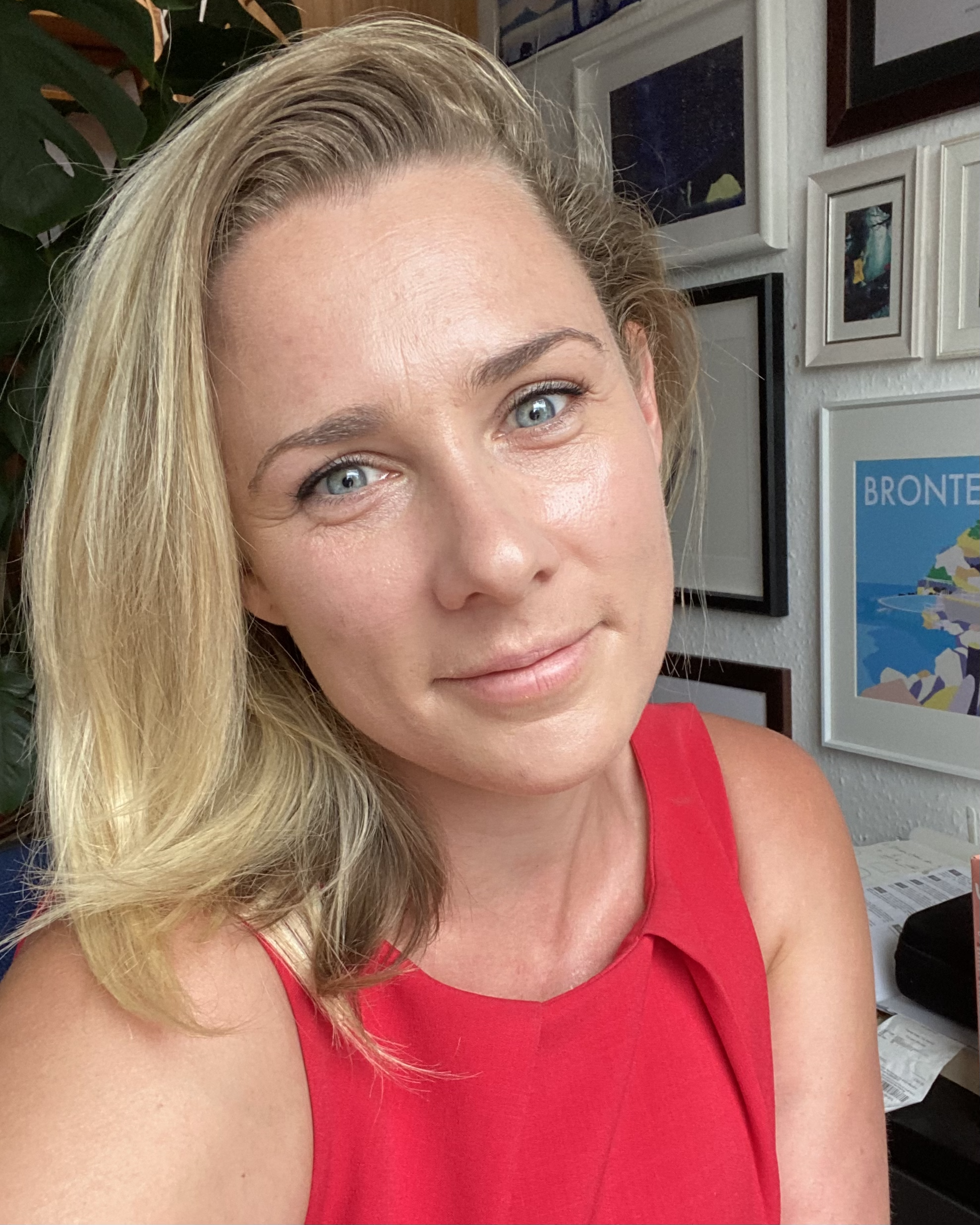
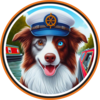
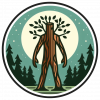
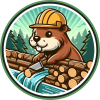
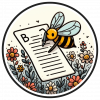
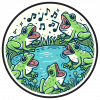
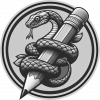
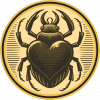
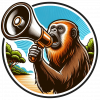

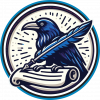
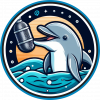
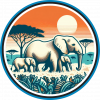
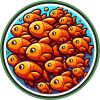

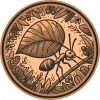
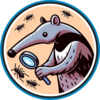
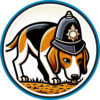














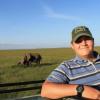




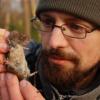


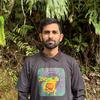






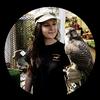




























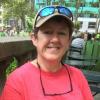






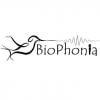









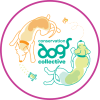



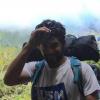













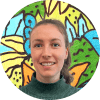






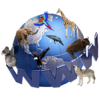








































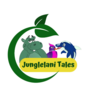










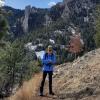

























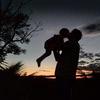






Stephanie O'Donnell commented on "RFID Tech for small animals?"